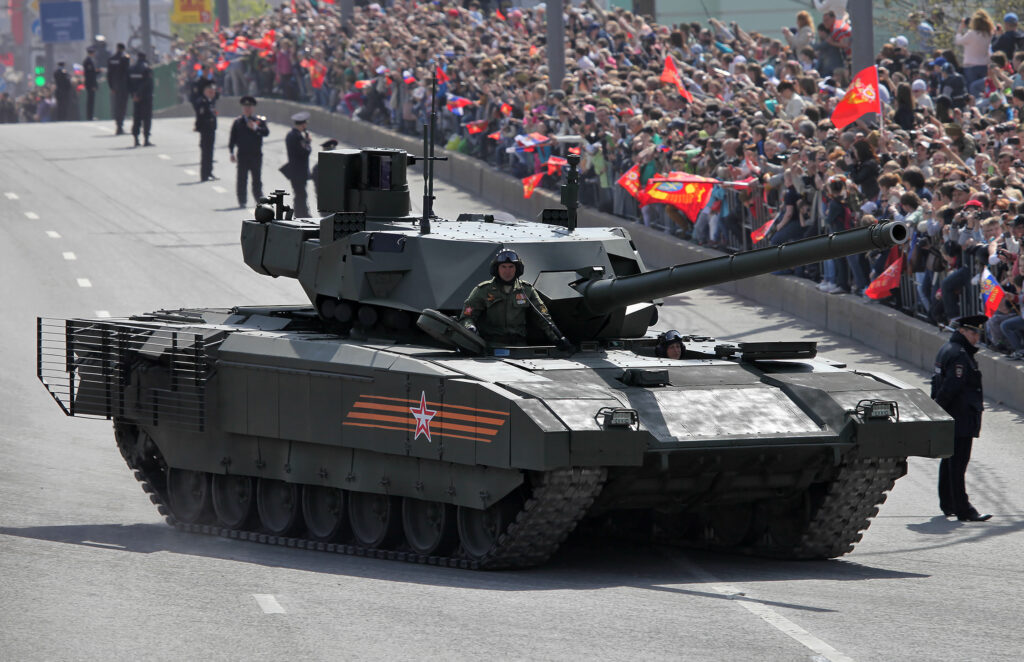
DARPA concept for future ground vehicle.
ARLINGTON: The US Army wants its Next Generation Combat Vehicle to serve as pack master to a swarm of crawling and flying robots. It wants lighter weapons with heavier firepower, able to aim almost straight up to shoot drones out of the sky and hit rooftop snipers. It wants miniaturized missile defenses to shoot down incoming anti-tank weapons. It wants suspension, underbody, and crew compartments designed from the ground up (literally) to resist landmines and roadside bombs. It wants diesel-electric engines — like a giant Prius — or other advanced motors that can power an array of jammers, sensors, and drone-killing lasers.
Given Russian advances and our own aging hardware, the Army also wants all this, or something close, by 2035. That means research and development must get started now, when budgets are already tight.

Lt. Gen. H.R. McMaster
“Our enemies have not remained static,” warns Lt. Gen. H.R. McMaster, the Army’s charismatic chief futurist. One assessment says that Russia will have surpassed US forces in three of 10 key areas of combat by 2030, reached parity in six, and remain behind in only one. On the US side, the current M1 Abrams heavy tank and M2 Bradley armed transport have been upgraded so many times already that they’re close to “maxed out,” McMaster told an Association of the US Army conference yesterday. But at the same time, he said, “we have tremendous opportunities, associated with technologies at a high level of maturity that can be incorporated into a new generation combat vehicle.”
“I don’t think there’s any one silver bullet,” McMaster told reporters afterwards, “(but) you can see parts of the solution…on combat vehicles today,” such as the German Puma troop carrier, the Israeli Merkava heavy tank, the British Ajax scout, and the Swedish CV90, “a heck of a vehicle.”
But are the potential gains worth the investment? Are they worth the risk of a new design when so many Army programs have failed since the end of the Cold War? Can’t the Army just keep upgrading the Abrams and Bradley?

Maj. Gen. Eric Wesley
You can only stick so many new systems on an old design before you reach diminishing returns, said Maj. Gen. Eric Wesley, who commands the infantry and armor center at Fort Benning, Ga. The M1 in particular has grown too heavy to cross many bridges in Eastern Europe, he said, so you can’t just pile on more armor. But Russian-made missiles keep getting more deadly, so you need to get more protection somehow. The Army’s experimenting with off-the-shelf Active Protection Systems (APS), which use radars to detect incoming projectiles and mini-missiles or shotgun-style blasts to shoot them down, but it’s always awkward and suboptimal to retrofit such complex, power-hungry systems on vehicles not designed with them in mind.
“What you don’t want to do is build a Frankenstein,” Wesley told reporters. “If you build a vehicle from the ground up, all those systems are integrated.” To take full advantage of the new technologies, he said, you need to build a new vehicle designed around them.
The factor that drives armored vehicle design, more than any other, is “volume under armor.” The bigger the gun, the bigger the engine, and above all the bigger the crew, the more armor you have to wrap around them to achieve any given level of protection, and, of course, the more armor, the more weight. The M1 is built to handle the recoil of a 120 mm smoothbore cannon and to accommodate a four-man crew: commander, driver, gunner, and loader. If you replace the 120 with a lighter weapon that uses more powerful “energetics” — i.e. warhead and gunpowder — to get the same effect, then redesign the turret around the smaller weapon, each pound saved on the gun itself saves you multiple pounds of armor on the vehicle overall. If you replace the human loader with a mechanical autoloader — unreliable gadgets back in the 1970s but mature today — you can save even more weight and possibly take the crew out of the turret entirely (as on the new Russian T-14 Armata).

Russia’s new T-14 Armata
The goal isn’t just to build a better Bradley or Abrams, Wesley said. “We need to think more broadly, (e.g.) manned-unmanned teaming,” he said, referring to humans and robots working closely together. The unmanned systems scout ahead and, potentially, carry weapons, acting as expendable skirmishers and spear-carriers for manned vehicle, which is the only one that needs full-up armor. “If I’ve got a remotely piloted or tethered vehicle” — with zero humans inside to protect — now I can really reduce weight,” Wesley said.
Lighter combat vehicles teamed with robots sounds a uncomfortably like the Army’s overly ambitious Future Combat Systems program, cancelled in 2009. But the Next Generation Combat Vehicle is not FCS redux, Army officials insist. Don’t say “here we go again,” McMaster said. “We’re trying diligently to pay attention to FCS and the lessons learned from that.”
What’s different? To start with, the Army literally boxed itself in on FCS, trying to build vehicles as powerful as a 70-ton M1 that could fit in an Air Force C-130, which can carry a maximum of 19 tons. The Next Generation Combat Vehicle isn’t constrained by weight, although “lighter than the M1” is clearly a goal; air-deployable firepower is being provided by a completely different program, the Mobile Protected Firepower (MPF) light tank, which isn’t expected to take on the hardest targets. To meet its weight limits, FCS tried to use Active Protection Systems instead of heavy armor; the current approach is to layer APS on top of heavy armor, a much more reliable approach.
Indeed, across the board, the Army rolled the dice on FCS, betting on multiple untested technologies. To avoid FCS’s fate, the Army wants mature technologies for the Next Generation Combat Vehicle. That means, to enter service by 2035, R&D needs to get focused now.
What those promising technologies are, and what the Army’s timeline is, we’ll explain in Part II of this article, out tomorrow.
Army eyes TBI monitoring, wearable tech for soldiers in high-risk billets
“We are also looking at what additional personal protective equipment we can provide to our folks, especially instructors and others who are routinely exposed to blast pressure,” said Army Secretary Christine Wormuth.


























